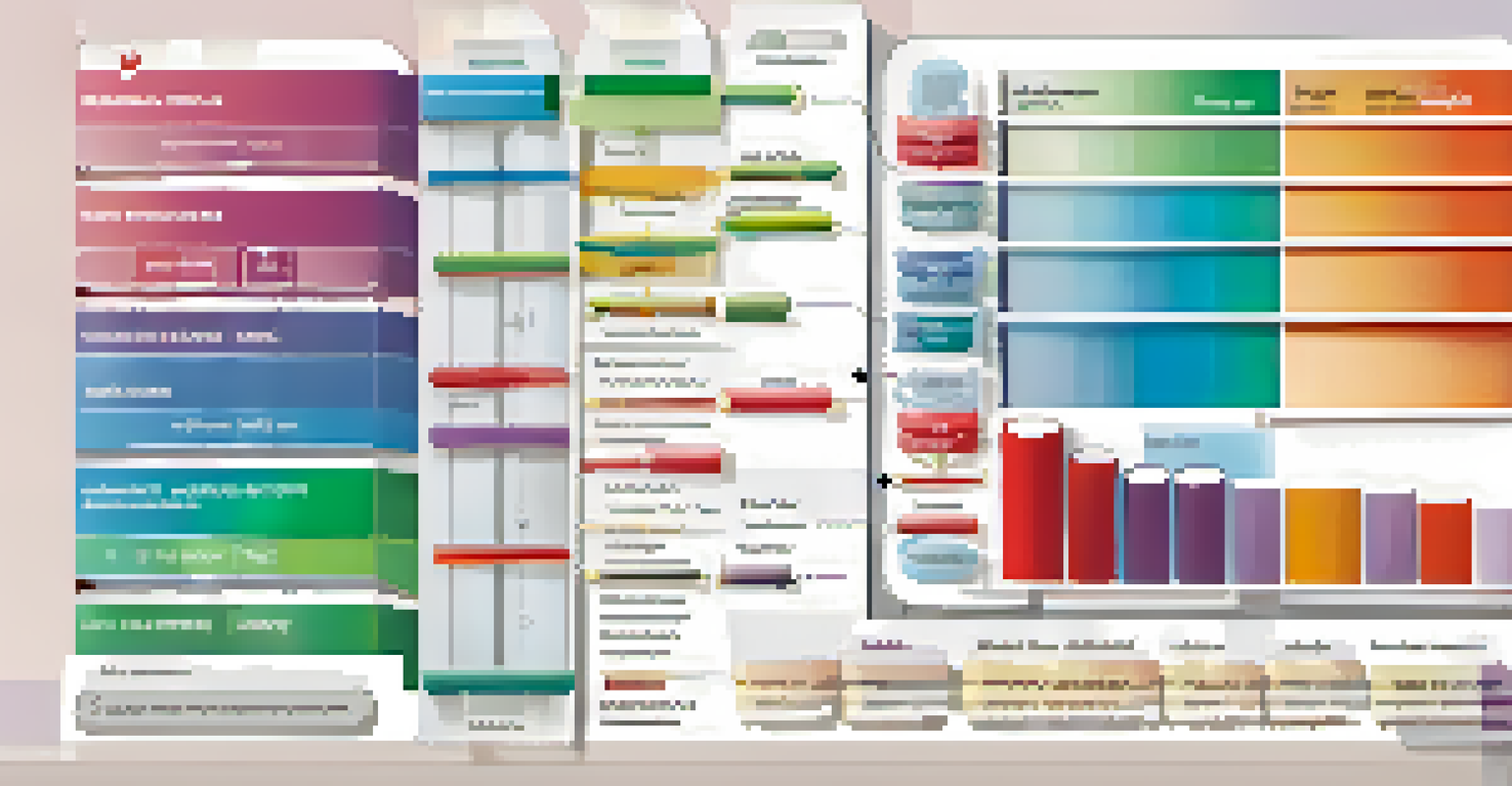The Impact of Drug Formulary Decisions on Healthcare Costs

What is a Drug Formulary and Its Purpose?
A drug formulary is essentially a list of medications that are preferred for use within a particular healthcare system or insurance plan. It serves as a guide for healthcare providers, helping them determine which drugs are covered and at what cost. The primary aim of a formulary is to ensure that patients receive effective medications while managing overall healthcare costs.
The greatest wealth is health.
Formularies are often categorized into tiers, with lower tiers representing more cost-effective options and higher tiers indicating more expensive choices. This tiered system encourages the use of generic medications and other cost-saving alternatives. By guiding prescribers towards these options, formularies can play a pivotal role in controlling healthcare expenses.
Moreover, the decisions made regarding which drugs to include in a formulary are typically influenced by various factors such as efficacy, safety, and cost-effectiveness. Therefore, understanding a formulary’s structure is crucial for patients, providers, and payers alike, as it directly impacts accessibility to necessary medications.
The Role of Pharmacy Benefit Managers (PBMs)
Pharmacy Benefit Managers (PBMs) act as intermediaries between insurers, pharmacies, and drug manufacturers. They play a significant role in creating drug formularies by negotiating prices and determining which medications will be covered. Their influence on cost decisions can lead to significant savings for health plans but can also create complexities for patients trying to navigate their options.

PBMs often utilize various strategies, such as rebates from drug manufacturers, to lower costs for insurers. However, these savings may not always translate to lower out-of-pocket expenses for patients. In fact, some patients may find themselves facing high co-pays for certain medications that are on higher tiers of the formulary.
Drug Formularies Guide Medication Use
A drug formulary is a list of preferred medications that helps healthcare providers determine coverage and costs.
As the role of PBMs continues to evolve, it raises questions about transparency and fairness in drug pricing. Patients may feel the pinch when formularies restrict access to certain medications, highlighting the need for a balanced approach that considers both cost and patient care.
Impact on Patient Access to Medications
One of the most significant consequences of drug formulary decisions is their impact on patient access to necessary medications. When certain drugs are excluded or placed on higher tiers, patients may face barriers to obtaining the treatment they need. This can lead to delays in care or even medication non-adherence, which can worsen health outcomes.
In health there is freedom. Health is the first of all liberties.
For example, a patient with a chronic condition may rely on a specific medication that is not included in their insurance formulary. If the out-of-pocket cost is prohibitive, they may be forced to forgo treatment. This reality underscores the importance of formularies in shaping not just healthcare costs, but also the quality of patient care.
Ultimately, the decisions made regarding drug formularies can have real-world consequences for patient health. Ensuring that formulary structures are patient-centered is essential for promoting access to effective treatments and improving overall healthcare outcomes.
Cost Savings vs. Clinical Effectiveness
While drug formularies are designed to promote cost savings, they can sometimes compromise clinical effectiveness. When cheaper alternatives are prioritized, there is a risk that patients may not receive the most effective treatment for their specific conditions. This trade-off can lead to increased healthcare costs in the long run if patients experience complications from inadequate treatment.
For instance, in conditions where brand-name drugs have no true generic equivalents, patients may be directed towards less effective alternatives, resulting in potential health declines. These situations can create a cycle where patients require more extensive care, ultimately negating the initial cost savings achieved through formulary restrictions.
PBMs Influence Drug Pricing and Access
Pharmacy Benefit Managers play a crucial role in creating formularies while negotiating prices, impacting patient access to medications.
Therefore, striking a balance between cost savings and clinical effectiveness is essential. Formularies should not only focus on reducing costs but also consider the long-term health implications for patients.
The Impact of Specialty Drugs on Formularies
Specialty drugs, which are often high-cost medications used to treat complex conditions, can significantly impact drug formulary decisions. These medications typically require special handling and monitoring, and their price tags can vary drastically. As a result, many health plans have developed specific strategies for managing specialty drug costs, often placing them in high-tier categories on formularies.
For patients, the implications can be significant. For example, a patient needing a specialty drug might find themselves facing high co-pays or limited access due to stringent formulary restrictions. This can create financial burdens that deter patients from adhering to their treatment plans.
Addressing the challenges presented by specialty drugs requires thoughtful formulary design and clear communication with patients. Ensuring that patients can access these critical therapies is essential for improving health outcomes.
Formulary Changes and Their Consequences
Drug formularies are not static; they can change frequently due to evolving clinical guidelines, new drug approvals, and cost considerations. These changes can significantly impact patients, particularly if a medication they rely on is removed or moved to a higher tier. Such shifts can create confusion and stress for patients trying to navigate their treatment options.
For instance, a sudden formulary change might leave a patient scrambling to find an alternative medication or facing unexpected costs. This situation can lead not only to financial strain but also to negative health outcomes if patients are unable to find an appropriate substitute.
Formulary Changes Affect Patient Care
Frequent changes in drug formularies can lead to confusion and stress for patients, affecting their treatment and financial stability.
As healthcare stakeholders work to manage costs, it’s vital to communicate changes to formularies transparently. Patients deserve to be informed and supported, especially when such changes can affect their health and finances.
The Future of Drug Formularies in Healthcare
Looking ahead, the future of drug formularies in healthcare will likely be shaped by advancements in technology and a growing emphasis on value-based care. As the industry moves toward more personalized medicine, formularies may evolve to better reflect the unique needs of patient populations. This could involve more flexible approaches that account for individual patient circumstances and treatment effectiveness.
Moreover, transparency in how formulary decisions are made will be crucial in building trust among patients and providers. By fostering open communication about the rationale behind drug formulary choices, healthcare systems can enhance patient engagement and adherence to treatment plans.

Ultimately, the goal will be to create formularies that not only control costs but also prioritize patient health and access to necessary medications. This balance will be essential in navigating the complexities of modern healthcare.